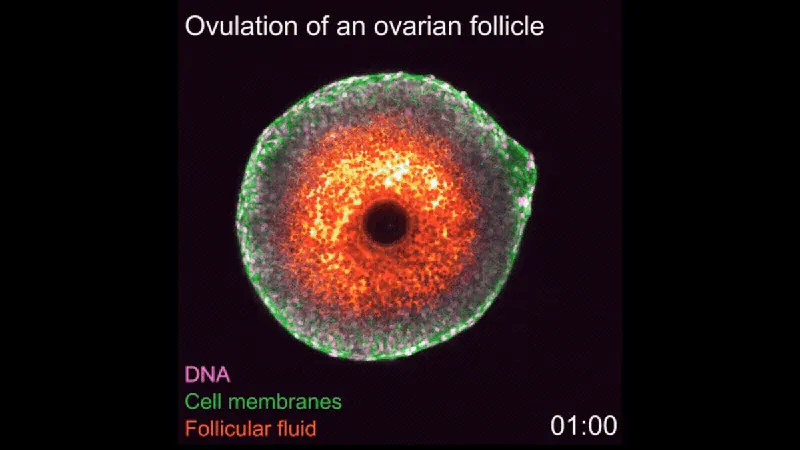
Groundbreaking Discovery: First-Ever Real-Time Video of Ovulation Revealed!
2024-10-29
Author: Siti
Groundbreaking Discovery: First-Ever Real-Time Video of Ovulation Revealed!
In a historic achievement, scientists have filmed the intricate process of ovulation for the first time, capturing the dramatic expulsion of an egg from its follicle with astonishing clarity. This remarkable footage showcases a mature mouse egg cell forcefully released from its fluid-filled sac, known as a follicle, and into a lab dish. The team achieved this milestone by isolating follicles from mice and stimulating them to ovulate using specific hormones in controlled petri dishes.
This cutting-edge video was made possible through a novel imaging technique detailed in a study published on October 16 in the prestigious journal, *Nature Cell Biology*. The researchers' innovative approach allowed them to observe the entire ovulation process in living tissues, a feat that has historically posed challenges due to the complexities of studying internal mechanisms within living organisms.
Interestingly, the process of ovulation in mice bears striking similarities to that in humans. Typically, women of reproductive age release one mature egg from their ovaries around day 14 of their 28-day menstrual cycle. After the egg is released, it travels through the fallopian tubes toward the uterus, where it can potentially be fertilized. If fertilization does not occur, the egg will eventually be expelled from the body during menstruation.
The ability to study these mechanisms in real-time marks a significant advancement in reproductive biology. Traditionally, scientists have relied on analyzing ovarian tissues extracted from the body and preserved for observation under a microscope. This method, though informative, does not provide insights into living systems, highlighting the groundbreaking nature of the recent findings.
In their study, the research team identified three critical phases that occur during ovulation. Initially, the largest and most mature follicle expands by approximately 1.5 times over eight hours, facilitated by the secretion of hyaluronic acid, which promotes fluid influx into the follicle. This is followed by rapid contractions of muscle cells in the follicle's outer layers, resulting in the eventual release of the egg.
Crucially, blocking any of these steps hindered ovulation, underscoring the importance of each phase in the process. "Our findings illustrate that ovulation is an incredibly resilient mechanism," stated Melina Schuh, co-author of the study and director at the Max Planck Institute for Multidisciplinary Sciences in Germany. She emphasized that, while an external stimulus is necessary for ovulation to commence, the subsequent actions are largely self-sufficient, contained within the follicle itself.
Looking ahead, Schuh and her colleagues are optimistic that their pioneering imaging technique could broaden our understanding of ovulation and female fertility. "With this breakthrough approach, researchers can delve deeper into the complexities of ovulation, paving the way for potential advancements in human fertility research,” she added.
This revelation may not only enhance the scientific community’s comprehension of reproductive processes but also spark a renewed interest in fertility studies, with the potential to revolutionize treatments and interventions for those facing fertility challenges. Stay tuned for more updates as this research progresses!


 Brasil (PT)
Brasil (PT)
 Canada (EN)
Canada (EN)
 Chile (ES)
Chile (ES)
 España (ES)
España (ES)
 France (FR)
France (FR)
 Hong Kong (EN)
Hong Kong (EN)
 Italia (IT)
Italia (IT)
 日本 (JA)
日本 (JA)
 Magyarország (HU)
Magyarország (HU)
 Norge (NO)
Norge (NO)
 Polska (PL)
Polska (PL)
 Schweiz (DE)
Schweiz (DE)
 Singapore (EN)
Singapore (EN)
 Sverige (SV)
Sverige (SV)
 Suomi (FI)
Suomi (FI)
 Türkiye (TR)
Türkiye (TR)